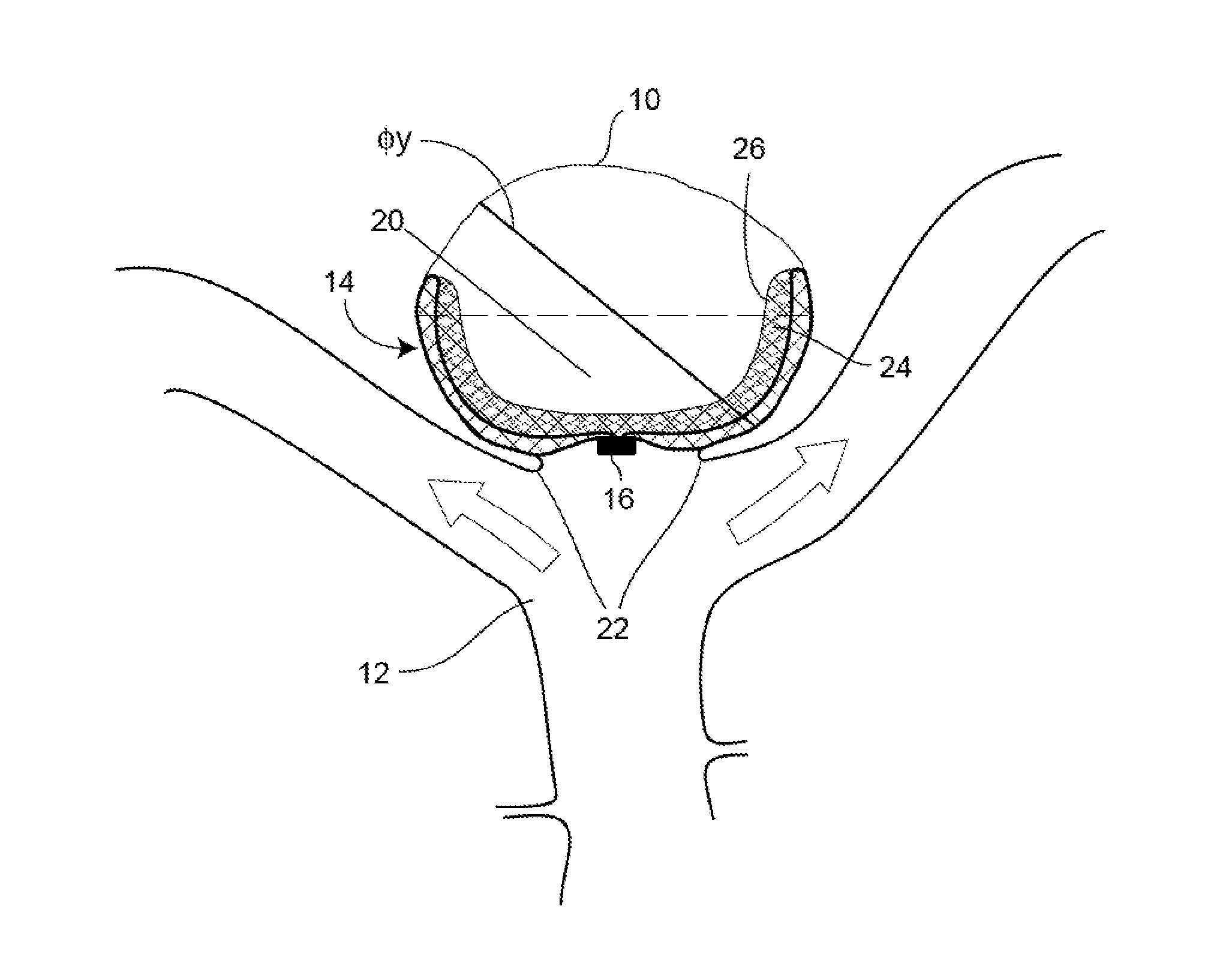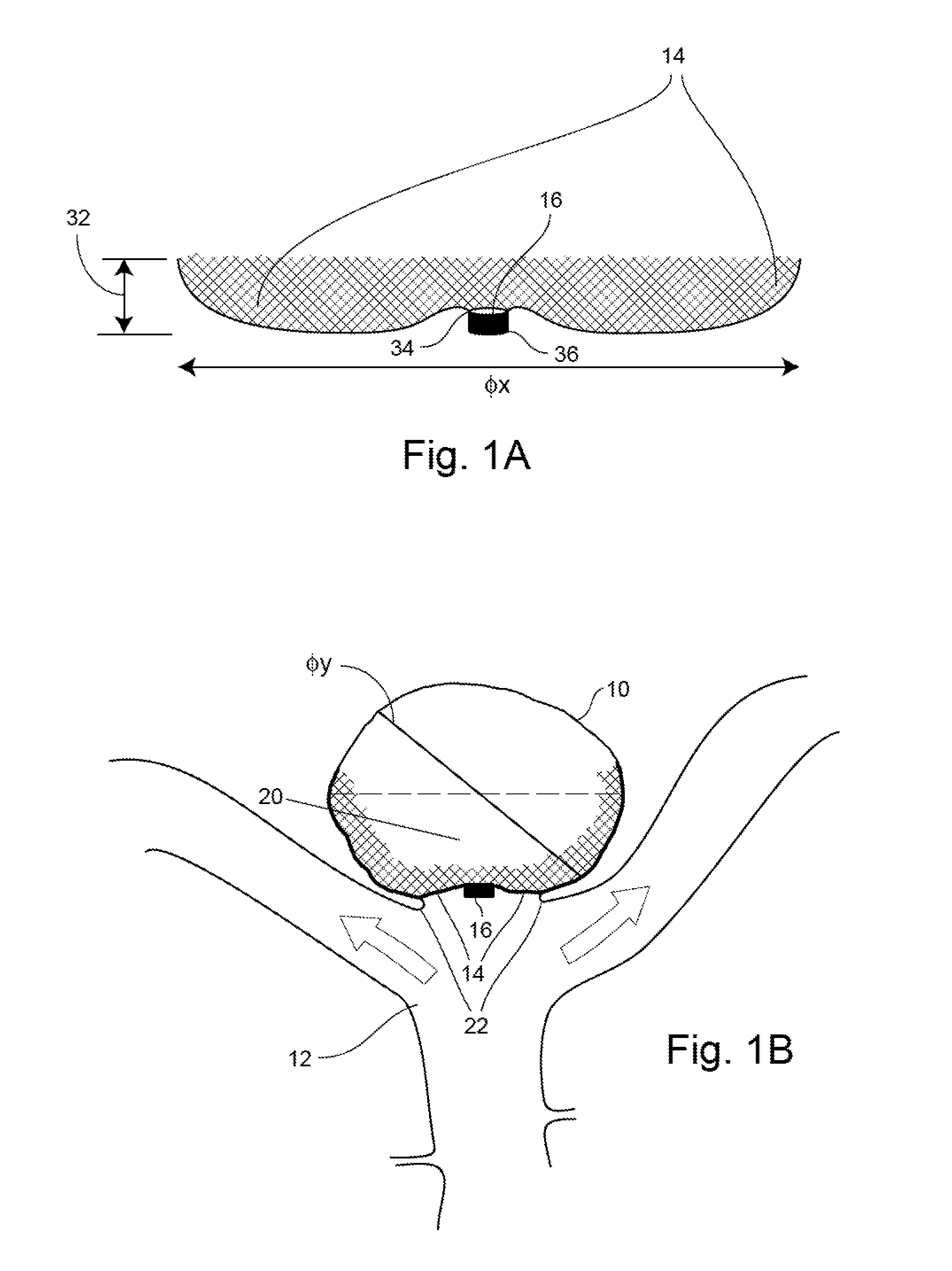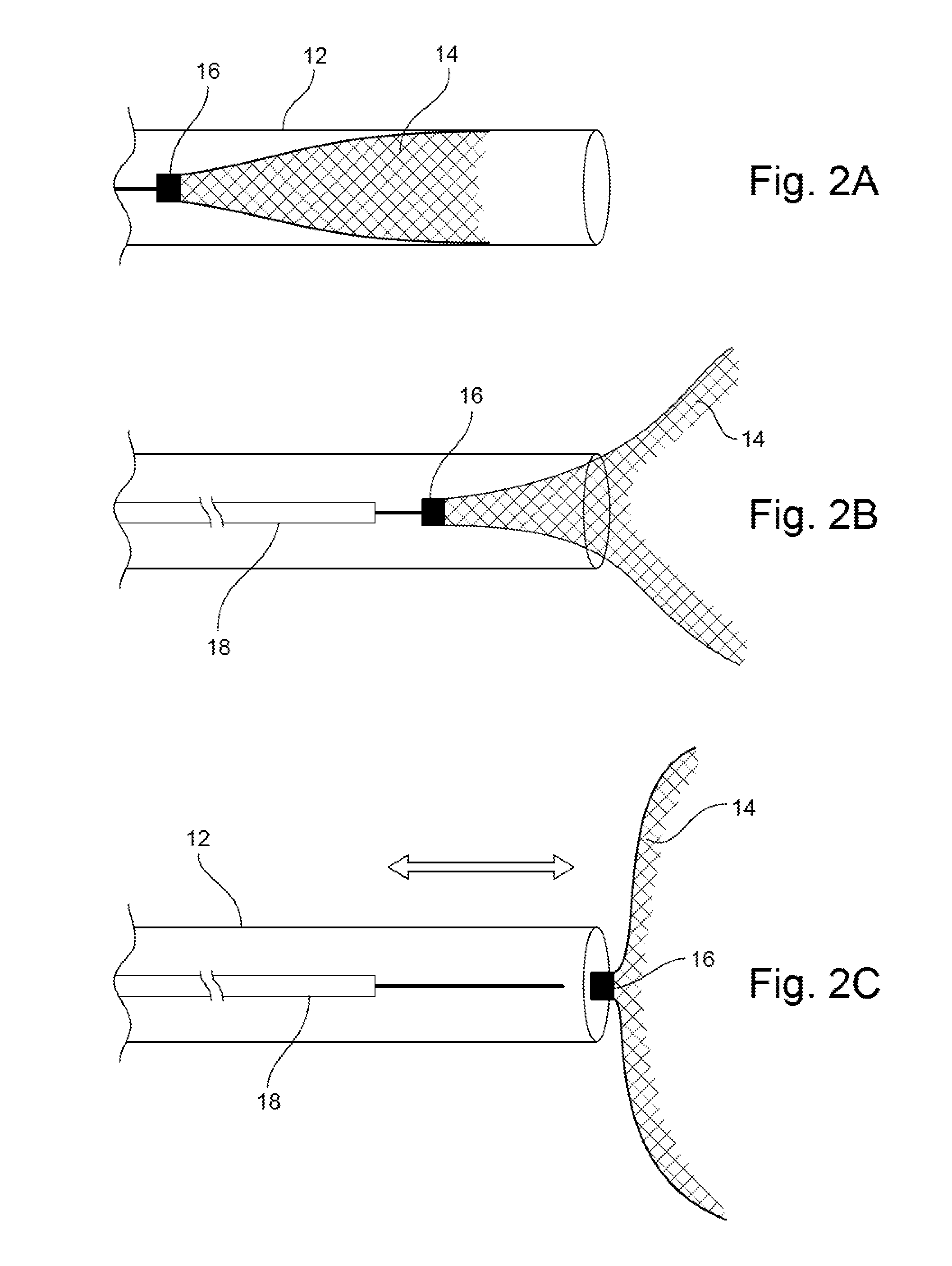Occlusion Device
a technology of occlusion device and occlusion chamber, which is applied in the field of occlusion device, can solve the problems of unmet need for providing aneurysm treatment and/or amelioration, risk of leakage and/or rupture, hemorrhagic stroke, brain damage, etc., and achieves the effect of less material, less need for anti-coagulation therapy, and less risk of clot emboli formation
- Summary
- Abstract
- Description
- Claims
- Application Information
AI Technical Summary
Benefits of technology
Problems solved by technology
Method used
Image
Examples
example i
[0083]Non-detachable occlusion device lot 30680, Detachable occlusion device lot 30676, Aneurysm size 4.5 millimeters (mm) (height)×2.5 width
[0084]A 5-F (5-French) sheath placed in the femoral artery through which a 5F Cordis catheter, lumen 0.035″, length 65 centimeters (cm) and a 0.035″ Terumo guide-wire access was gained into the carotid artery.
[0085]The non-detachable occlusion device was positioned into the aneurysm with the marker at the neck of the aneurysm and contrast runs performed at timed intervals. Immediately after deployment of the device, it was observed to be in a good position in the aneurysm and there was some slowing of flow. At 5 minutes post deployment, there was some stasis observed in the aneurysm. At 10 minutes post deployment, further stagnation in the aneurysm was observed and the device was repositioned closer to the aneurysm neck. At 15 minutes post deployment, stagnation of flow in the aneurysm was observed. When the device was removed from the aneurysm...
example ii
[0087]Non-detachable occlusion device lot 30680, Detachable occlusion device lot 30676, Aneurysm size 10 mm height×4 mm wide×3 mm neck
[0088]A similar procedure to Example I was performed with the placement of the non-detachable device into the aneurysm neck. In this example, a 4F system was used to introduce the device into the 5F sheath and a “step” on the internal hub of the catheter was noted to cause the device to catch. The device was placed and timed angiographic runs obtained as before. Immediately post deployment, some flow reduction was observed in the aneurysm. At 5 minutes post deployment, a filling defect was observed in the aneurysm sac. At 10 minutes post deployment, an increase in size of the filling defect was observed.
[0089]This device was removed, angiography demonstrated that flow had returned to pre-deployment status in the aneurysm, and an implantable (detached) device was deployed using the same method as previously. The implant required some force initially to...
example iii
[0092]Detachable device lot 30676, Aneurysm size 6.5 mm×3.1 mm width×2.4 mm neck
[0093]The procedure followed the same protocol as Example II, however, on contrast agent injection it was noticed that the aorta had dissected. It was possible to deploy a device into the aneurysm neck and timed angiographic runs obtained as before.
[0094]Observations
[0095]This series of angiograms confirm the wire mesh braid configuration of the occlusion device disclosed herein is sufficiently dense to reduce blood flow in the aneurysm leading to stasis of blood and thrombosis in the aneurysm sac. The study, accounting for variability in animal morphology, allowed for the understanding and consideration of device development and its deployment technique.
[0096]All femoral punctures were carried out via femoral cut-downs with the use of a vein picker. The sheaths used were 5-F and specifically had very narrow tips allowing expansion of the femoral vessel without damaging it. The length of the catheter was...
PUM
 Login to View More
Login to View More Abstract
Description
Claims
Application Information
 Login to View More
Login to View More - R&D
- Intellectual Property
- Life Sciences
- Materials
- Tech Scout
- Unparalleled Data Quality
- Higher Quality Content
- 60% Fewer Hallucinations
Browse by: Latest US Patents, China's latest patents, Technical Efficacy Thesaurus, Application Domain, Technology Topic, Popular Technical Reports.
© 2025 PatSnap. All rights reserved.Legal|Privacy policy|Modern Slavery Act Transparency Statement|Sitemap|About US| Contact US: help@patsnap.com



